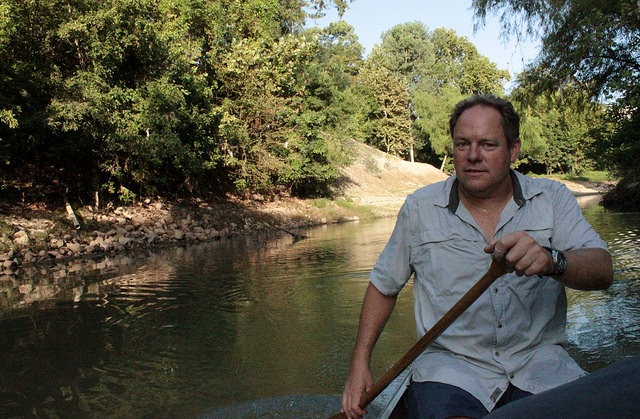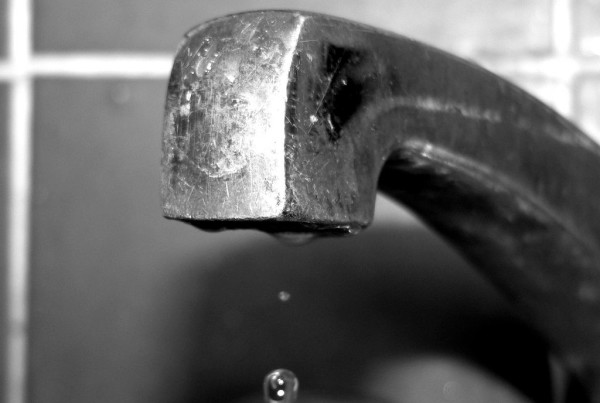The story originally appeared on Houston Public Media.
It’s a place where people have been battling the power of water for decades. So we took a canoe to see how that power is re-shaping Buffalo Bayou.
“So what we’re going to do is have you sit in this chair in the middle,” says our guide, Tom Helm as we ease into what he tells us is his most stable canoe. Helm is a canoeist and also a geologist in the oil and gas industry.
We start our journey from where Buffalo Bayou runs under the West Loop. We’re soon floating along at a leisurely pace, going under a railroad bridge as a freight train passes overhead. We pass the backside of the Omni Hotel. We hit a few obstacles.
“Whoa! That was a log we ran into, by the way,” says Helm.
We manage not to tip over, and soon we are just a few miles upstream from downtown Houston.
It seems like another world. In places, the banks of the bayou are more like bluffs, towering above us. But in many places, the bayou’s banks are collapsing: trees that were once on-shore have fallen into the water.
As we pass the backyards of sprawling, multi-million dollar homes that lie in Houston’s River Oaks subdivision, we see how people have tried over the years to fight the power of the water.
“Looks like sheet metal pilings I guess they’ve put in up here,” says Helm as we pass one of several examples of how homeowners have tried to “harden” the shoreline.
One has erected a wall of steel pilings; another used hundreds of bags of cement; others have carpeted the banks with concrete pavers. And still others have used tons of what looks like concrete from demolished buildings.
The visual effect of the man-made walls might strike some as jarring because they look so out-of-place in what is otherwise a shore of trees, weeds, sandbars and rock.
“I think they’re ugly and damaging. They should have just left it natural,” says Susan Chadwick, who is also on-board with us. Chadwick is an outspoken advocate for keeping Buffalo Bayou as natural as possible.
We float a bit further and encounter a man in shorts and t-shirt walking along the shoreline opposite those big houses. He tells us he lives in a new, modern home with a yard that slopes right down to the water. He tells us that over the years, Buffalo Bayou has had a mind of its own, actually moving dozens of feet into what had been his backyard.
“I pay taxes on the property you’re floating on right now … because the bayou moved,” he says.
The bayou moved again this past May when nearly a foot of rain fell here.
“This entire corner got knocked off. It took out two trees that were 70 or 80 years old. It chopped off the literally the entire crown of this bend in the bayou,” the homeowner says.
He’s lined his share of the shoreline with what’s called riprap. It looks like small boulders. He says it’s worked better than those metal pilings we saw upstream.
And maybe to some it might look more natural — which is no small thing. Because there’s a debate going on here over what do about the erosion of Buffalo Bayou.
The Harris County Flood Control District is working on a plan to try to stabilize a mile long stretch of the bayou where it flows between the River Oaks Country Club on one side and Memorial Park on the other. The flood control district says it will use natural techniques to reconfigure the bayou.
But critics of the project argue it would be better to just leave the bayou alone; a bayou that has defied past efforts to be reined in.















